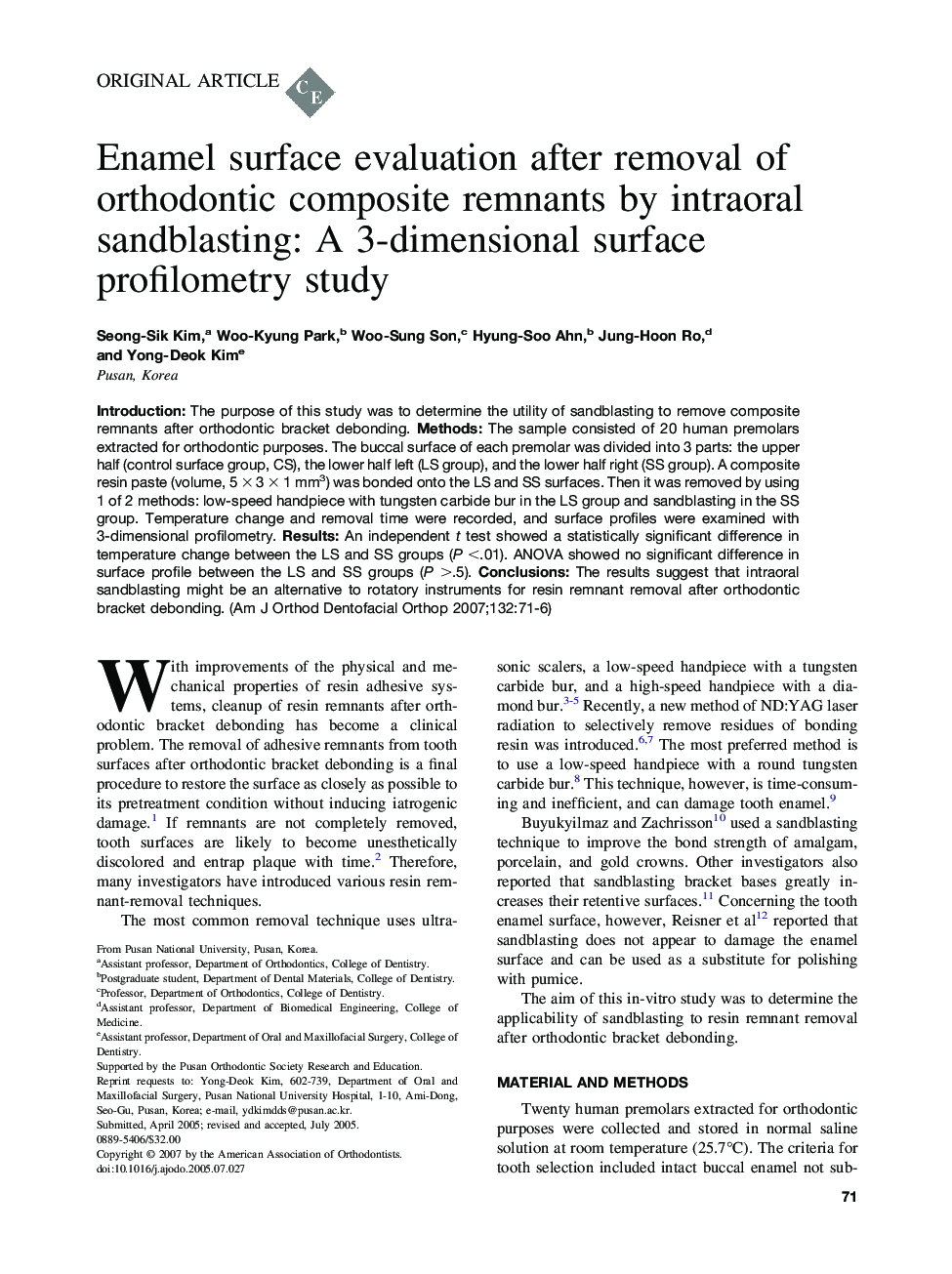| Article ID | Journal | Published Year | Pages | File Type |
|---|---|---|---|---|
| 3118570 | American Journal of Orthodontics and Dentofacial Orthopedics | 2007 | 6 Pages |
Introduction: The purpose of this study was to determine the utility of sandblasting to remove composite remnants after orthodontic bracket debonding. Methods: The sample consisted of 20 human premolars extracted for orthodontic purposes. The buccal surface of each premolar was divided into 3 parts: the upper half (control surface group, CS), the lower half left (LS group), and the lower half right (SS group). A composite resin paste (volume, 5 × 3 × 1 mm3) was bonded onto the LS and SS surfaces. Then it was removed by using 1 of 2 methods: low-speed handpiece with tungsten carbide bur in the LS group and sandblasting in the SS group. Temperature change and removal time were recorded, and surface profiles were examined with 3-dimensional profilometry. Results: An independent t test showed a statistically significant difference in temperature change between the LS and SS groups (P <.01). ANOVA showed no significant difference in surface profile between the LS and SS groups (P >.5). Conclusions: The results suggest that intraoral sandblasting might be an alternative to rotatory instruments for resin remnant removal after orthodontic bracket debonding.
